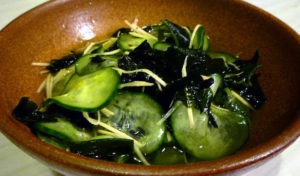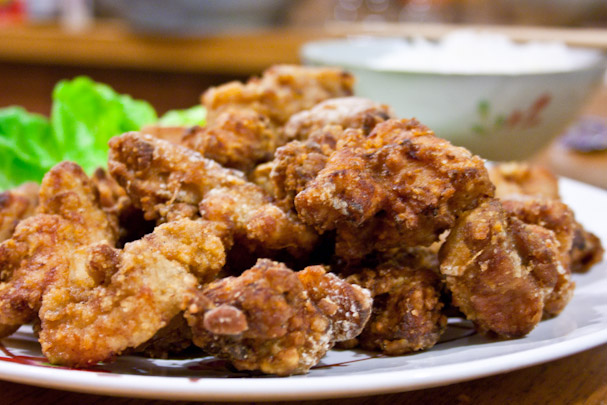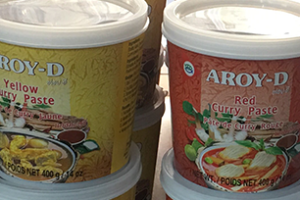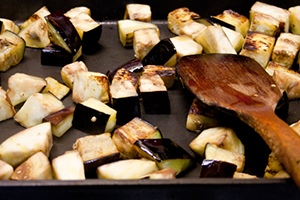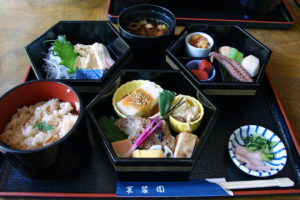Now that you know all the basic ingredients needed for Japanese cooking, let’s look at some recipes that you can use them in.
A basic meal in Japan is rice, pickles (tsukemono), miso soup and meat or fish.
Miso soup is made every day and eaten usually with breakfast and with dinner. Sometimes with lunch. This video combines the miso with water before adding it but you can also put it in a sieve and gently rub it to dissolve it in the soup.
Shio yaki means salt grilled, and it’s a way of preparing fish by rubbing salt into the flesh and then grilling it. Sake is used in this recipe but isn’t essential.
Teriyaki salmon is an easy crowd pleaser, this one uses the teriyaki sauce from the Basics post.
Agedashi tofu combines the basic flavours of Japanese food to make a clean and delicious dish usually served as an appetiser or part of a Japanese meal.
Yakitori is the ultimate beer drinking snack food. Sweet, salty, yummy, and on a stick. Here is one classic recipe and three less classic ones.
We’re still on the soy / mirin / dashi recipes.
Zaru soba is a classic dish for the hot, humid Japanese summer nights. We called them tsuru tsuru udon meaning slippery udon, although it uses soba not udon noodles. And we served the noodles in cold water with ice cubes before dipping in the sauce.
Sukiyaki is the famous dish of simmered meat and veggies in a soy, mirin and sake.
Traditionally it is served with a dipping sauce of raw egg but for non-Japanese friends I have also used shabu shabu sauce (not authentic but still delicious!).
*vegan version omits the strips of beef and substitutes in as many different varieties of asian mushroom as possible. Carnivorous dining companions will not miss the meat at all I promise!
Nasu dengaku is eggplant with a sweet miso glaze. It is very easy and very delicious.
It uses miso, mirin, dashi and sugar to make the sauce to add to simply grilled eggplant.
Time to get out the oil for some frying!
Logically tempura is the cross over here, with the tsuyu dipping sauce and the frying component.
Lightness is the key for the batter. My mum used to break an egg into the vegies, and add some corn flour and salt and stir it around. This is a fairly close recipe.
Tonkatsu is breaded, fried pork loin. It is eaten with a side of shredded cabbage and some tonkatsu sauce (a mixture of ketchup and worcestershire), or tartare sauce.
Be like a Japanese mum and make a lot of tonkatsu so that the next day you can make katsudon. It won’t surprise you to hear that katsudon combines the tonkatsu with a tsuyu… but also with onions stewed into it and a beaten egg and served over rice in a bowl (don = donburi = bowl). Comfort food deluxe.
This is my mum’s recipe that my friend Suresh blogged.
Karaage is deep fried chicken with a soy, ginger, garlic flavour. It is a Japanese version of chinese fried chicken. These are delicious and one of those recipes where it takes a while to marinate, then fry in batches, then you put it on the table and it’s gone in 3 minutes as everyone happily gobbles it up.
I like to make a version of this with tofu, get the firm tofu and press the water out of it first. It is more delicate than the chicken version so marinate it as normal and then dip into corn starch just before you put it in the oil.

